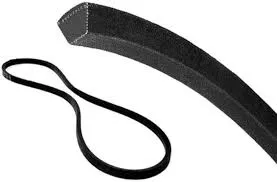- Arabic
- French
- Russian
- Spanish
- Portuguese
- Turkish
- Armenian
- English
- Albanian
- Amharic
- Azerbaijani
- Basque
- Belarusian
- Bengali
- Bosnian
- Bulgarian
- Catalan
- Cebuano
- Corsican
- Croatian
- Czech
- Danish
- Dutch
- Afrikaans
- Esperanto
- Estonian
- Finnish
- Frisian
- Galician
- Georgian
- German
- Greek
- Gujarati
- Haitian Creole
- hausa
- hawaiian
- Hebrew
- Hindi
- Miao
- Hungarian
- Icelandic
- igbo
- Indonesian
- irish
- Italian
- Japanese
- Javanese
- Kannada
- kazakh
- Khmer
- Rwandese
- Korean
- Kurdish
- Kyrgyz
- Lao
- Latin
- Latvian
- Lithuanian
- Luxembourgish
- Macedonian
- Malgashi
- Malay
- Malayalam
- Maltese
- Maori
- Marathi
- Mongolian
- Myanmar
- Nepali
- Norwegian
- Norwegian
- Occitan
- Pashto
- Persian
- Polish
- Punjabi
- Romanian
- Samoan
- Scottish Gaelic
- Serbian
- Sesotho
- Shona
- Sindhi
- Sinhala
- Slovak
- Slovenian
- Somali
- Sundanese
- Swahili
- Swedish
- Tagalog
- Tajik
- Tamil
- Tatar
- Telugu
- Thai
- Turkmen
- Ukrainian
- Urdu
- Uighur
- Uzbek
- Vietnamese
- Welsh
- Bantu
- Yiddish
- Yoruba
- Zulu
Oct . 14, 2024 23:42 Back to list
Understanding the Importance of Internal Timing Belts in Engine Performance and Maintenance
Understanding Internal Timing Belts The Heart of Engine Synchronization
The internal timing belt is a crucial yet often overlooked component of an internal combustion engine. Essential for maintaining the synchronization between the engine's camshaft and crankshaft, this rubber belt plays a pivotal role in ensuring optimal engine performance and longevity. In this article, we will delve into the importance of timing belts, how they function, signs of wear, and when they should be replaced.
The Function of Timing Belts
At its core, the timing belt's primary function is to synchronize the rotation of the camshaft and crankshaft, ensuring that the engine's valves open and close at the correct times during each cylinder's intake and exhaust strokes. This synchronization is critical because if the valves are out of sync, they may collide with the pistons, leading to catastrophic engine damage.
The timing belt connects the crankshaft, which converts the linear motion of the pistons into rotational motion, to the camshaft, which controls the opening and closing of the engine’s valves. In most modern engines, timing belts are made out of durable rubber reinforced with nylon or fiberglass to withstand high levels of stress while maintaining flexibility.
Signs of Timing Belt Wear
Like any mechanical component, timing belts wear over time, and recognizing the signs of wear early can prevent significant damage to the engine. One common sign of a failing timing belt is a ticking or slapping noise coming from the engine area, which may indicate that the belt is loose or frayed. Additionally, if you experience a decrease in engine performance or notice misfiring or difficulty starting, it may be time to inspect the timing belt.
Another indicator of a failing timing belt is visible wear, such as cracks, fraying, or signs of slipping. Regular inspection can help catch these issues before they lead to complete failure. It's important to heed any unusual sounds or performance issues and consult a mechanic.
internal timing belt

Replacement Guidelines
The lifespan of a timing belt can vary based on the manufacturer and model of the vehicle, but generally, they should be replaced every 60,000 to 100,000 miles. It's essential to consult your vehicle’s owner’s manual for specific recommendations. Some vehicles may have timing chains instead, which typically last longer but still require periodic inspection and maintenance.
When replacing a timing belt, it's advisable to change the water pump simultaneously, as they often share the same labor costs for replacement. This proactive approach can save time and money in the long run and ensure that both components are in excellent working condition.
The Consequences of Failure
Ignoring the health of the timing belt can lead to severe engine problems. If the timing belt fails while driving, it may result in a complete engine failure, which can be both costly and dangerous. This is especially true in interference engines, where the pistons and valves occupy the same space in the cylinder. A timing belt that snaps in such engines can lead to bent valves and a damaged cylinder head.
In contrast, non-interference engines may simply stop running but avoid catastrophic damage. Regardless, the inconvenience and costs associated with engine repairs are significant, which highlights the importance of timely maintenance.
Conclusion
The internal timing belt is a small but mighty component at the heart of an engine's operation. Regular maintenance and timely replacement of this essential part can prevent costly repairs, enhance engine performance, and ensure the safety of your vehicle. Being proactive about timing belt care not only extends the lifespan of your engine but also gives you peace of mind while driving. If you suspect any issues, seek professional advice immediately; the investment in maintenance is far less than the cost of engine repairs due to timing belt failure.
-
Korean Auto Parts Timing Belt 24312-37500 For Hyundai/Kia
NewsMar.07,2025
-
7PK2300 90916-T2024 RIBBED BELT POLY V BELT PK BELT
NewsMar.07,2025
-
Chinese Auto Belt Factory 310-2M-22 For BMW/Mercedes-Benz
NewsMar.07,2025
-
Chinese Auto Belt Factory 310-2M-22 For BMW/Mercedes-Benz
NewsMar.07,2025
-
90916-02660 PK Belt 6PK1680 For Toyota
NewsMar.07,2025
-
drive belt serpentine belt
NewsMar.07,2025

